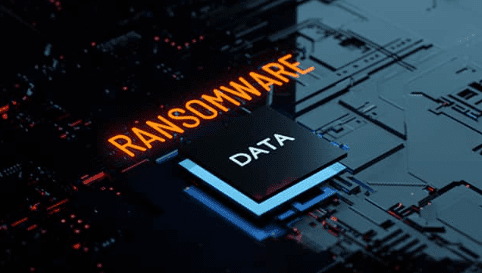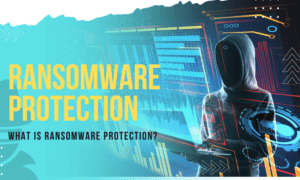Ransomware attacks on enterprise systems and businesses have become increasingly prevalent and sophisticated, resulting in devastating consequences for all types of organizations. These attacks can cause data loss, financial losses, brand image damage, and cataclysmic business disruption. Despite the growing threat of ransomware attacks, many organizations still make common – dare we say rookie – mistakes in their enterprise ransomware prevention strategies. This article will explore the most common ransomware protection errors and faux-pass made by enterprises and provide easy-to-follow tips for avoiding them. By understanding these mistakes and implementing effective ransomware prevention measures, organizations can minimize the risk of an attack and reduce the impact if one occurs.
Ransomware and enterprise systems
Let’s take a real-world view on why ransomware has become a major threat to enterprise systems — and why cybercriminals are reaping the rewards. In a nutshell, each attack, for a crook, is akin to hitting the lottery.
- Profitability: Ransomware attacks have become very profitable for cybercriminals. The attackers use encryption to lock the victim’s data and then demand a ransom to restore access to it. The ransom is typically paid in cryptocurrency, which can be difficult to trace. This means that the attackers can make a significant profit with relatively little effort.
- Ease of deployment: Ransomware is relatively easy to deploy, and cybercriminals can use a variety of methods to infect enterprise systems, including phishing emails, malicious attachments, and infected software. This means that attackers can launch ransomware attacks on a large scale, making it more difficult for organizations to defend against them.
- Lack of preparedness: Many organizations are not adequately prepared to defend against ransomware attacks. They may lack the necessary security measures, such as firewalls, intrusion detection systems, and data backups, or their employees may not be trained to recognize and avoid potential ransomware threats.
- Targeting of critical systems: these sort of break-ins often target critical systems, such as healthcare facilities, government agencies, and financial institutions, where the impact of a successful attack can be particularly devastating. This makes these organizations more likely to pay the ransom to restore their systems quickly.
- Evolution of ransomware: Ransomware has evolved over time to become more creative and harder to detect. Some variants of ransomware use advanced encryption algorithms, making it difficult or even impossible to recover encrypted data without paying the ransom. Others use social engineering techniques to trick users into installing the malware or to make the ransom demands appear more convincing.
Reasons why enterprise ransomware protection is critical
A ransomware attack on an enterprise system can have severe consequences — it can be crippling both financial and for your reputation. Without proper enterprise ransomware protection solutions, the following consequences may occur:
- Data loss or destruction: Ransomware can encrypt or delete critical data, making it inaccessible to the organization. If the organization doesn’t have backups or cannot recover the data, this can result in permanent data loss.
- Financial losses: Organizations may be required to pay a ransom to regain access to their data. In addition to the cost of the ransom, there may be costs associated with remediation efforts, such as forensic investigations, system recovery, and legal fees.
- Downtime: A ransomware attack can cause significant downtime, which can result in lost productivity and revenue. The longer the attack goes undetected, the longer the downtime may be — in some cases up to 21 days.
- Reputation damage: A ransomware attack can damage an organization’s reputation, particularly if the attack results in a data breach. Customers may lose trust in the organization, and the organization may face legal and regulatory consequences.
- Business disruption: A ransomware attack can disrupt normal business operations, leading to delays in product or service delivery, missed deadlines, and dissatisfied customers.
To mitigate the consequences of a ransomware attack, organizations should have a comprehensive ransomware protection strategy in place. This strategy may include measures such as regular backups, security awareness training, vulnerability management, and incident response planning. By taking these steps, organizations can minimize the impact of a ransomware attack and ensure a faster recovery.
Most common mistakes in enterprise ransomware protection
Here are some of the most common errors when it comes to enterprise ransomware protection and how to prevent them:
Failure to patch vulnerabilities
One of the most common mistakes is failing to patch known vulnerabilities in software and systems. To prevent this, enterprises should establish a patch management process to identify and apply patches regularly. They should also update apps, plugins, and software constantly.
Inadequate employee training
Employees are often the weakest link in ransomware protection. To prevent this, enterprises should provide regular security awareness training and establish policies and procedures for handling sensitive data and responding to suspicious emails and links.
Lack of backup and disaster recovery planning
Many enterprises fail to maintain proper backups or disaster recovery plans. An easy fix — organizations should maintain regular backups, test their recovery procedures, and establish redundant data storage systems. They can automate this task.
Insufficient network segmentation
Enterprises may fail to properly segment their networks, which can allow ransomware to spread easily. To prevent this, enterprises should divide their networks based on business needs and restrict access to critical systems.
Over-reliance on antivirus software
Antivirus software is essential, but it is not a comprehensive ransomware protection solution. To mitigate this, enterprises should employ a range of security technologies and regularly review and update their security measures.
Lack of incident response planning
Enterprises may not have a clear incident response plan for responding to ransomware attacks. To edit this out of their weaknesses, organizations should establish a clear incident response plan that includes roles and responsibilities, communication protocols, and remediation procedures.
Failure to test ransomware protection measures
Enterprises may fail to test their ransomware protection measures regularly. Organizations have to conduct regular security assessments and penetration testing to identify vulnerabilities and test their security controls.
Importance of avoiding enterprise ransomware protection mistakes
It is critical to be aware of enterprise ransomware protection pitfalls and avoid them because attacks of this nature can have severe consequences on an organization’s whole enchilada— which ultimately translates to a significant impact on an organization’s bottom line and long-term viability.
Additionally, ransomware attacks have become increasingly common, imaginative and sophisticated, making it even more important for organizations to be proactive in their ransomware protection efforts. Attackers are constantly developing new techniques and tactics to evade security controls and exploit vulnerabilities, making it paramount for organizations to stay up to date on the latest threats and protection strategies.
By avoiding ransomware protection mistakes, organizations can reduce the risk of a successful ransomware attack and minimize the impact if an attack does occur. This includes implementing best practices for security, such as regular backups, security awareness training, network segmentation, and incident response planning. By taking these steps, organizations can ensure the protection of their critical data and systems and maintain the trust of their customers and stakeholders.

































